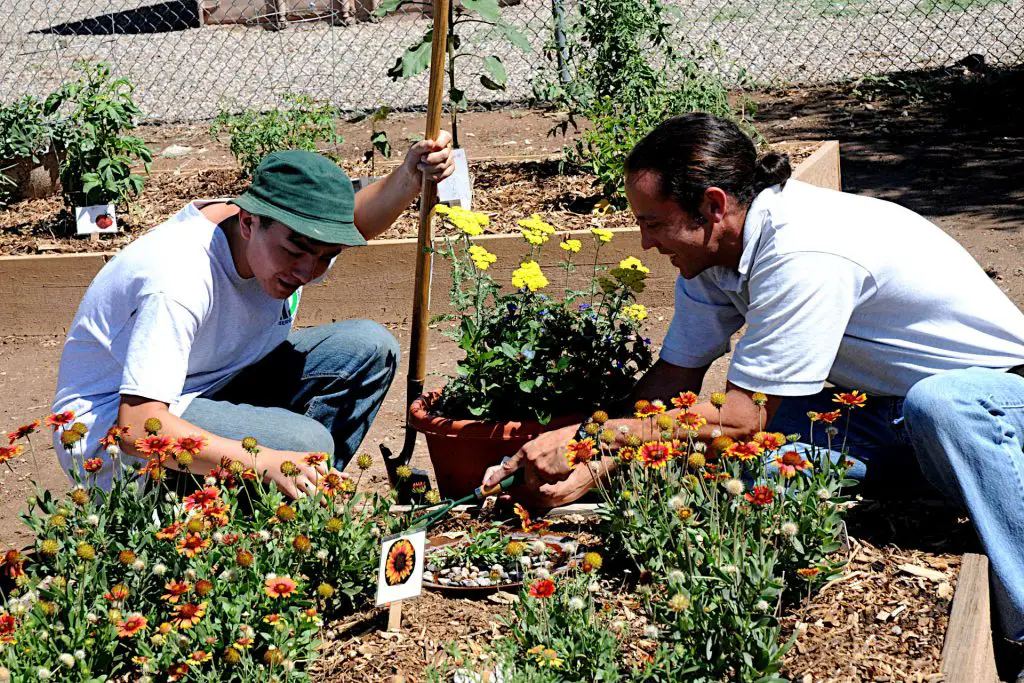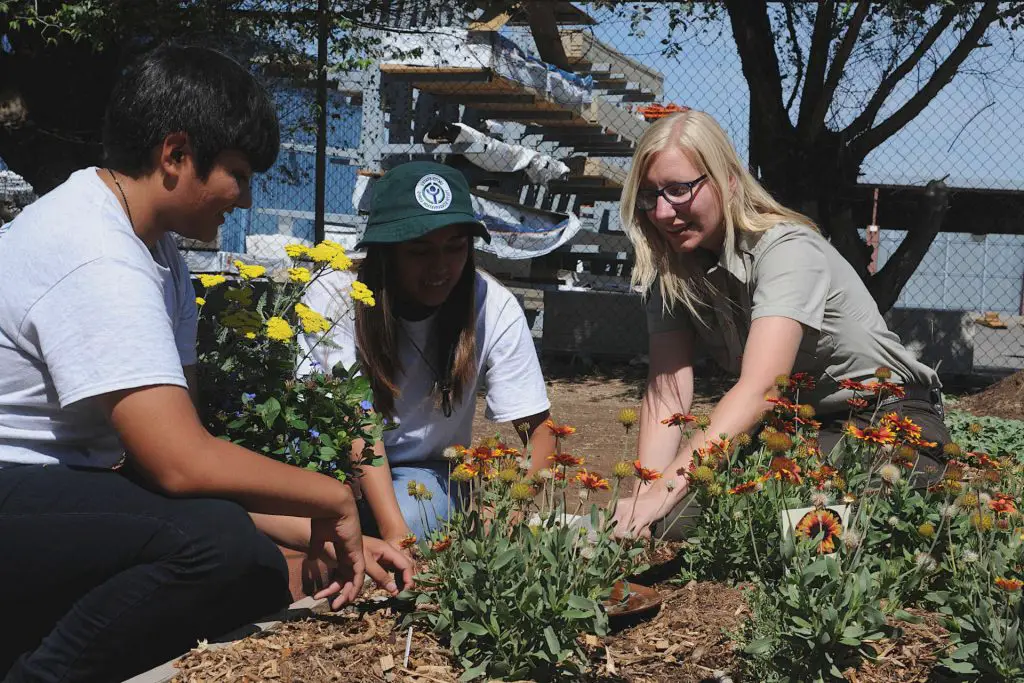What Is a Community Garden? | The Social and Urban Benefits of Community Gardens
There are many reasons to take up gardening, from the basic need to keep your yard tidy, to the genuine enjoyment it provides and even the health benefits of keeping active. Unfortunately, gardening is not an option for everyone.
The draw of urban living over the last century or more has seen a huge reduction in the available living space in many cities with gardens often being sacrificed in the need to satisfy the continual building process. This has resulted in opportunities to take up gardening being drastically reduced, and for some, they have become almost non-existent. This has led to the rise of the community garden, projects that have been designed to give people access to space to develop a garden.
Community gardens have a rich and varied history and have benefits not just for the gardeners but for the community and city as a whole and, in some instances, have become incredibly important. But what does it mean to be a community garden? We will try to define what exactly constitutes a community garden, what it is intended to produce, and how a community garden may function as an urban place.
History of Community Gardening
The concept of communal areas for cultivation and grazing goes back centuries. However, in England from the sixteenth century, there was a concerted effort to ‘enclose’ what was formally common land where villagers had traditionally had the right to graze animals and grow food.
The enclosure was usually done by landowners and was often illegal through the Tillage Acts the enforcement of the acts fell to those who were in favour of enclosure meaning little was done. Enclosure eventually led to the end of the open field system, which ad allowed villagers to graze their animals on the land that lay fallow each year.
Toward the end of the nineteenth century, the increasing urbanization caused by the industrial revolution provided the impetus on both sides of the Atlantic for the development of what was known as ‘common gardens’ in America, allotments in England and Schrebergarten in Germany in the early twentieth century.
This involved land being made available to the working poor so that they may cultivate their own food. Indeed in England, the Allotment Act made it a statutory duty for Local Authorities to provide land for allotments.
In America it was Detroit that led the way with The Detroit Plan, providing vacant lot gardens to unemployed laborers so that they could grow their own food.. The project was so successful many other American cities followed suit. This expanded to not just city governments providing space but to churches and other charitable organisations also developing communal gardens. Total practically every town and city will have a network of community gardens.
What Is a Community Garden?

A community garden is an area that is gardened by a group of people, be it as a collective or split into individual plots. Community gardens can be found all over the world, and they come in all shapes and sizes.
In terms of use cases and structure for allotments in England very little has changed over the last hundred years. In America, the same is also somewhat true although there are many more privately and charitably owned community gardens.
Community gardens come in different forms and have different end goals, depending on the project and where you are.
Social, and Environmental Factors that Define a Community Garden
There are certain social and environmental factors that encapsulate a community garden
A community or public garden differs from a private garden in several ways. Firstly, it is generally managed by a larger organization than a single person or family. Secondly, it is typically maintained by volunteers rather than paid staff. Thirdly, it is often used for recreation purposes such as sports, games, etc. Fourthly, it tends to be located within a community center or park. Finally, it is often associated with a particular ethnic group or culture.
However, these characteristics do not define a community garden. A community garden can be run by a small group of individuals or a large corporation. It can be maintained by a volunteer group or a professional management team. It can be used for recreational activities or solely for growing food. It can be located anywhere and be any size. These differences make it difficult to define exactly what a community garden is.
However, there are some general characteristics that are shared by most community gardens. One of the first things we should consider when thinking about a community garden is the purpose of the garden. As mentioned above, community gardens can be used for a variety of purposes including:
- Recreation
- Education
- Food production
- Social interaction
- Artistic expression
- Health promotion
- Conservation
What Are the Physical and Social Benefits Community Gardens Provide?
Community gardens provide both physical and social benefits beyond the aspect of gardening. There are many benefits that can help a cross-section of the community.
One of the original aims of community gardens was to help those with low incomes grow food. This purpose remains strong and a community garden is still a great place to grow a wide variety of healthy foods, including fruits and vegetables, of all types. This can be a great way to kick start a healthier eating pattern and replace cheap highly processed foods that families with tight budgets are often forced to buy.
From a wider perspective is a great way to get people to interact and spend time together. It encourages people get out of their homes and spend time in a natural environment. These gardens can also play an important role as opportunities for social interaction or the elderly, disabled, and those who are often housebound presenting a fantastic to feel involved.

Physical benefits of community gardening
Of course one of the most useful benefits is that these gardens can help people stay in shape, as gardening provides physical exercise and can burn plenty of calories. This can lead to a reduction in BMI[1] which is likely to bring with it an overall improvement in physical health. For those to those who might not otherwise get as much exercise and have little or no yard space, community gardens can provide this opportunity.
Mental Health Benefits of Community Gardening
There are also considerable mental health benefits that come with gardening. These include reducing stress and increasing self-esteem. More and more research shows that being in nature, especially gardening is good for one’s mental health. Japanese research found that looking at plants affected EEG records and decreased stress, anxiety, anger, and melancholy.[2]
Reviving the Urban Landscape
The benefits of community gardening are not just confined to social and physical benefits, they can have industrial and landscaping benefits too. They provide options for revitalising old industrial/brownfield sites or other parcels of land that may have fallen into disuse.
The effect that can have on the landscape can also be important turning ugly sites into well-tended areas full of thriving vegetation of various types and improving the tone of the areas the gardens are situated. As such community gardens have become important components of urban landscapes.
Summary: What Is Community Gardening
Community gardens have an enormous amount of upsides both for those that use them, in terms of having garden space coupled with the physical and mental health benefits and also to the community at large with landscape improvements.
Community gardens are a great way to connect with your neighbors and build relationships, share your time, and knowledge, or be a place to gain said knowledge. They become resources and lead to the creation of beautiful spaces.
Commonly Asked Questions
How does a community garden differ from a regular garden?
The main difference between a community garden and a traditional garden is that the community garden is generally open to anyone who wants to participate. In a traditional garden, such as a residential yard, only those who have own or have permission/access to the land can use it
Notes:
1] Ulrich Schmutz, Coventry University, Garden Organic and Sustain: The benefits of gardening and food growing for health and wellbeing
[2] Nakamura R. Fujii E., Techn Bull Fac Hort Chiba University: Studies of the characteristics of the electroencephalogram when observing potted plants.
